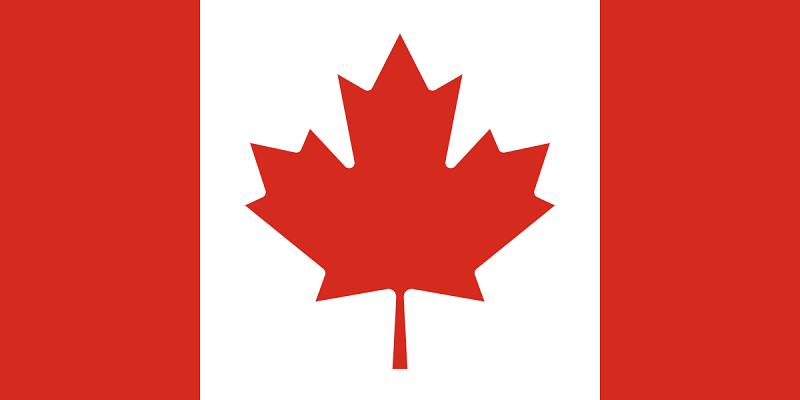This travel wiki page of Canada will help guide travelers with quick and relevant information to consider when planning and visiting the country. It is difficult to find all the relevant information you need on culture, safety, travel restrictions, and things to do, so we summarize it all here. If anything is stale or outdated, please reach out and let us know! Let’s dive in and explore more high-level information as a Canada trip planner.
Last updated January 10th of 2023.
Table of contents
National Information & Culture

Canada is a country in North America and the world’s second-largest by land area of over 9.98 million square kilometers (3.85 million square miles). Its ten provinces and three territories extend from the Atlantic Ocean to the Pacific Ocean and northward into the Arctic Ocean. The country shares borders with the United States on its southern and western sides. Canada’s capital is Ottawa, with Toronto, Montreal, and Vancouver as its three most extensive metropolitan areas. The country’s official currency is the Canadian Dollar (CAD).
The country is one of the world’s most ethnically diverse and multicultural nations, resulting from large-scale immigration. But in its broadest sense, Canadian culture combines British, French, and American influences. Canada is a world leader in government transparency, civil liberties, quality of life, economic freedom, education, gender equality, and environmental sustainability. Furthermore, Canada is top in producing several natural resources. It includes gold, nickel, uranium, diamonds, lead, and, in recent years, crude petroleum. Canada has the world’s second-largest oil reserves and plays an increasingly important role in natural resource exploitation.
A highly developed country, Canada ranks the 24th-highest nominal per capita income globally and a fifteenth on the Human Development Index. Its advanced economy is the eighth-largest globally, relying chiefly on its abundant natural resources and international trade networks. Canada is part of several major international and intergovernmental institutions, such as NATO, G7, Group of Ten, and G20, to name a few.
Check the Official Tourism Website of Canada for more information, tips, and hints when planning your trip.
Special Travel Considerations
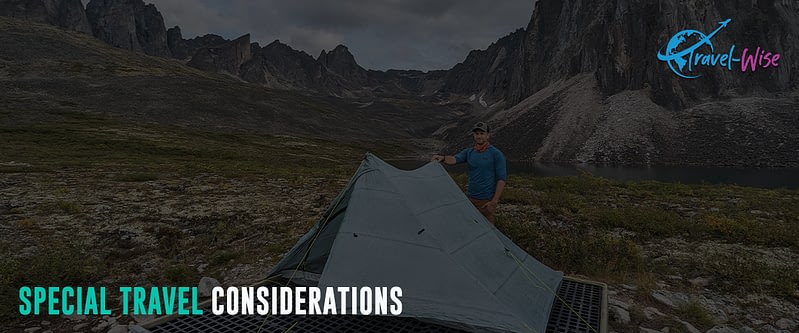
Covid-19 Protocol
On October 1, 2022, Canada lifted all COVID-19 travel and border measures. Hence, Covid-19 vaccinations and testing are not mandatory when entering the country.
But on January 5, 2023, the country issued new COVID-19 requirements for air travel from China, Hong Kong, and Macau. All air travelers two years and older from said countries must show a negative COVID-19 test result taken not more than two days before departure to board their flight.
Please visit the Government of Canada website and review the latest Covid-19 policy of the country when planning your trip.
Visa Information
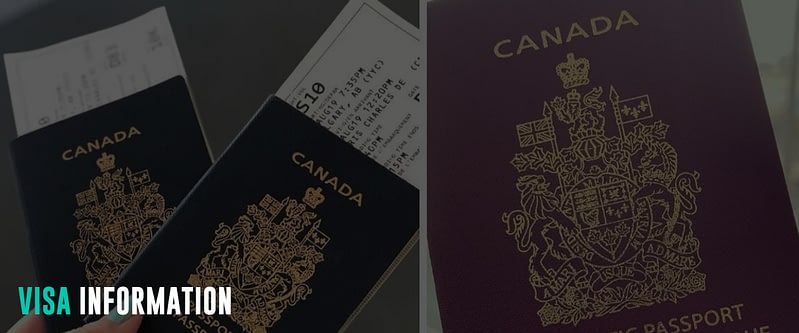
Travelers to Canada need at least six months of valid passports to enter the country. In addition to the passport, nationals from 54 visa-exempt countries (except the US) arriving by air must apply for an Electronic Travel Authorization (eTA). Applications are online, and each applicant must pay around $5.20 (CAD 7). Check the complete instructions and procedures on eTA before starting your applications.
Citizens of countries not on the list must apply for the appropriate visa before visiting Canada. Travelers can also check whether they need a visa to travel to Canada through the Government of Canada website. Meanwhile, travelers must also review and read more instructions on visitor visas.
Popular Attractions
Niagara Falls
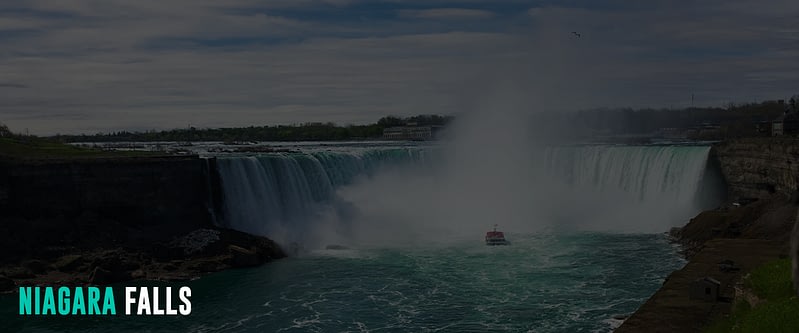
Niagara Falls is the most famous natural attraction in Canada. The falls consist of three parts. The Horseshoe Falls on the Canadian side runs 640 meters to the American shore, the 330 meters American Falls on the New York side, and the Bridal Veil Falls, which is located between the two. Horseshoe is the most spectacular section of Niagara Falls, with its massive falls drop of 57 meters high. Visitors will also see the best view of the falls from the Canadian side.
The falls are over an hour’s drive from Toronto and make an easy day trip for millions of annual visitors where they can see it close to the edge at their top. A popular activity for visitors is enjoying a walk down Niagara’s outrageous Clifton Hill leading to the gorge and falls or trying the tightrope walkers for the adventure seekers.
The Niagara Falls and the Niagara Gorge have been attracting tourists and daredevils, with numerous attempts to plunge over the falls in various types of homemade boats and barrels. It paves the way for developing a carnival-type atmosphere in the adjacent town of Niagara Falls, including the Niagara Skywheel. Other nearby attractions are the Dinosaur Adventure Golf, Movieland Wax Museum, and the Niagara Speedway.
Banff National Park

Banff National Park is Canada’s oldest national park, established in 1885. It lies in the heart of Alberta’s Rocky Mountains and showcases Canada’s most beautiful scenery. Turquoise-colored lakes, snow-capped peaks, glaciers, and dense forests are all easily accessible in this stunning park. Banff National Park is a year-round destination, from hiking on its excellent trails in the summer to skiing during winter.
Visitors to the park can take a scenic drive around or take some of the trails leading to the popular attractions, such as the hot sulfur springs in Cave and Basin National Historic Site. In addition, the park is also a great place to spot wildlife.
Moraine Lake is one of the park’s most photographed and visited parts. The lake is fed by glaciers, with stunning blue waters, surrounded by green mountains. Moraine Lake lies in the Valley of the Ten Peaks and is popularly accessible to tourists through the Rockpile Trail.
Another jewel of the park is Lake Louise, just a short distance from Moraine Lake. It has green waters reflecting the surrounding mountains and glaciers, a place for tourists to stroll. They can also take the gondolas in the park for more spectacular aerial views of the lake.
Old Quebec (Vieux-Quebec)
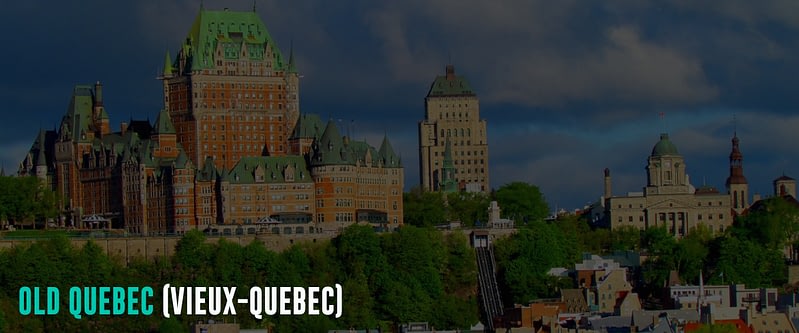
Old Quebec is a historic district in Quebec City and is a UNESCO World Heritage Site. Today, Old Quebec is the only walled city in North America and is a popular tourist destination for its hundreds of historical and photographic points of interest.
Quebec’s Upper and Lower Towns contain the city’s most historic buildings. Highlights of the Lower Town are the historic Fairmont Le Château Frontenac, along the St. Lawrence River. Meanwhile, above the 100-meter-high cliff is Upper Town, home to the Citadel, the Plains of Abraham, Place d’Armes, and the Parque Historique de l’Artillerie. In addition to the historical sites and buildings, visitors to Old Quebec will enjoy the numerous artworks displayed on Rue du Trésor and the Musée de la Civilisation.
Polar Bear of Churchill, Manitoba

One of Canada’s unique attractions is the polar bear migration in Churchill, Manitoba. Each fall, especially from October to November, polar bears make their way from land onto the ice in Hudson Bay. Polar bears gather on the bay, socializing with one another while waiting for the water to freeze before heading into the ice and crossing over for their migration. Tundra Buggy tours are available, taking visitors for a close encounter with the polar bears. The small town of Churchill is also a popular place for viewing beluga whales, birds, and the aurora borealis.
St. John’s Signal Hill National Historic Site
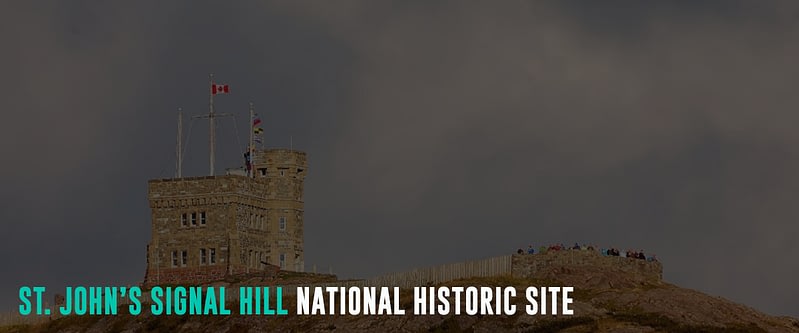
Signal Hill National Historic Site lies at the St. John’s harbor entrance, overlooking the city and sea. The site played a strategic role in the Seven Years’ War with France in 1762, although the current fortifications were built in 1812. It is also where the first wireless transatlantic signal transmitted over 2,700 kilometers distance from Poldhu, England, was received in 1901.
One of the important sites of Signal Hill is the Cabot Tower, built in 1897 to mark the four-hundredth anniversary of the discovery of Newfoundland. Visitors will find historical displays of Signal Hill inside the tower, including the history of communications. Panoramic views of the city and the coast are visible from the top.
Vancouver Island
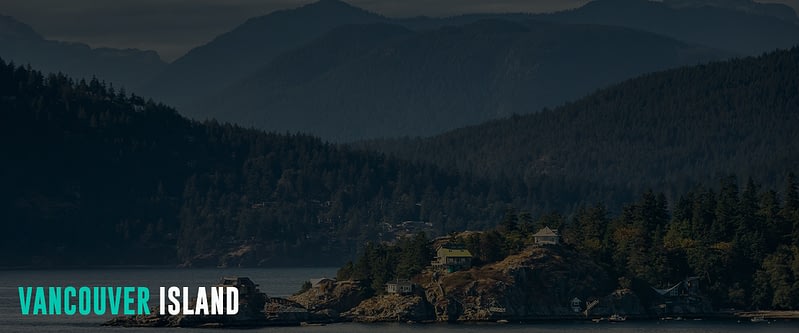
Vancouver Island is less than a two-hour ferry ride from the mainland of British Columbia and has Canada’s warmest and mildest climate. The island is a popular destination for nature lovers, with incredible sights of old forests and giant trees, some more than 1000 years. It includes the ancient trees of Eden Grove, Cathedral Grove, and to Tofino. Additionally, Tofino is a year-round destination, welcoming visitors with its sandy coves and shores. The Pacific Rim National Park Reserve also boasts excellent hiking trails and camping locations. Nanaimo, Parksville, and Qualicum Beach on the eastern coast are other destinations worth exploring on the island. In the far north is the Cape Scott Provincial Park.
Bay of Fundy
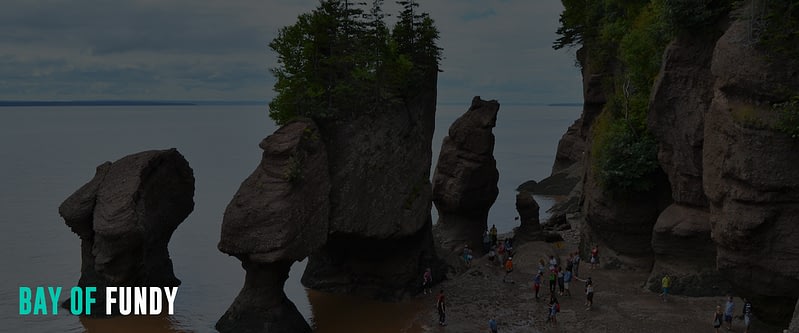
The Bay of Fundy is a funnel-shaped inlet between New Brunswick and Nova Scotia on the Atlantic coast. It is known for having the highest tides in the world and is home to over 12 species of whales. The tidal range of the Bay of Fundy can go as high as 16 meters.
One of the best places to watch the tides is the Hopewell Rocks consisting of several sandstone towers topped by trees. Travelers will also appreciate the natural wonder along the Bay of Fundy from Fundy National Park, the Fundy Trail Parkway, and Grand Manan Island.
Inner Harbor of Victoria
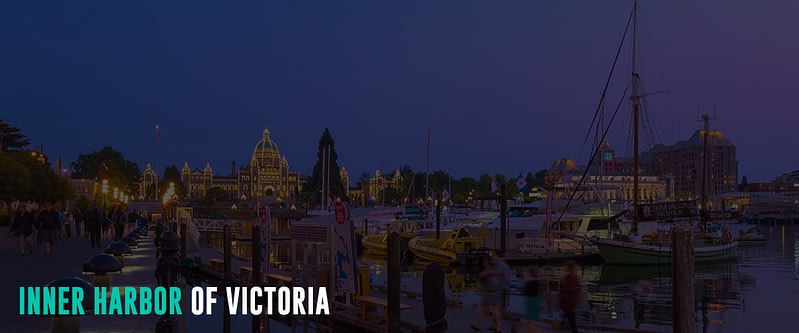
Victoria Harbor, including the Inner Harbor, is one of the famous tourist destinations in Victoria and the nearby Vancouver Island. Cruise ships and recreational vessels can dock at the center of the heritage city, a few steps from the historic streets and monumental architecture. It also serves as a seaplane airport and home to boarding jetties for several Canadian and US airlines.
Tourists here can join some of the ecotourism activities, including whale watching. During spring and summer, the Victoria Inner Harbor is a crystal blue site filled with boats on the pier. In addition, many festival shows and music are held in the area, adding a lively vibe to the tourist traffic.
Facing the city’s Inner Harbor is The Empress, one of the oldest hotels in Victoria, BC. The hotel houses visiting royalties in Canada. Today, the Châteauesque-styled building of The Empress Hotel (now Fairmont Hotels) is considered a National Historic Site of Canada.
Calgary Stampede

The Calgary Stampede is one of the world’s most famous and anticipated rodeos. It is an annual festival held every July in Calgary, Alberta, Canada, attracting over one million visitors. The ten-day festival event features one of the world’s largest rodeos, a parade, a midway, stage shows, concerts, agricultural competitions, chuck wagon racing, and First Nations exhibitions. During this period, Calgary turns into a western town, where people wear jeans and cowboy hats instead of suits going to work. The Calgary Stampede traces its origins back to the traveling wild west shows of the late 1800s and early 1900s.
The Northern Lights
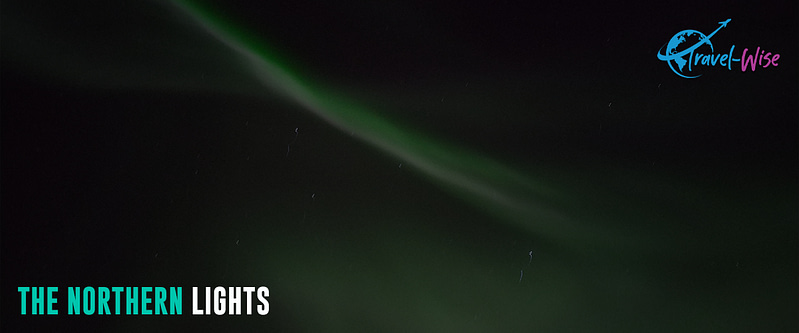
The aurora borealis, known as the Northern Lights, is a stunning natural phenomenon in the Northern Hemisphere. Most of Canada’s North lies beneath the Northern Hemisphere’s Auroral Oval. Hence, it is a hot spot for the northern lights, dancing in various shapes and colors of green, purple, pink, and yellow.
Remote communities with little or no light pollution are the best venues to spot the elusive northern lights. Generally, they show up 240 nights yearly in the Northwest Territories from September to March. Other sites include Churchill in Manitoba and Whitehorse and Northern Tales in Yukon.
The northern lights happen when the sun’s electrically charged particles, riding on the solar wind, enter the Earth’s atmosphere and collide with gases.
Gros Morne National Park
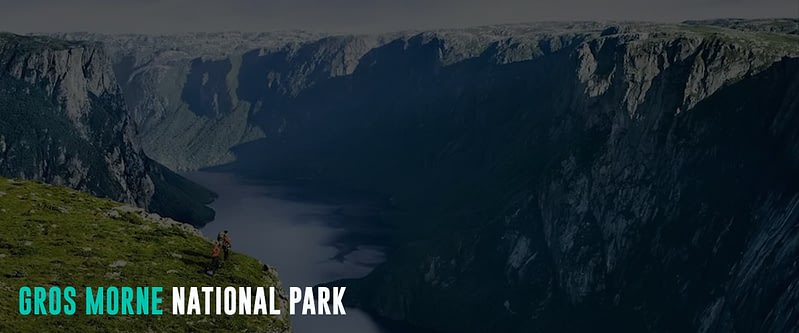
Gros Morne National Park in Newfoundland is the second-largest national park in Atlantic Canada, next to Torngat Mountains National Park. It was listed as a UNESCO World Heritage Site, providing a “rare example of continental drift, where deep ocean crust and the rocks of the earth’s mantle lie exposed.” The glacial actions resulted in the spectacular scenery of coastal lowlands, alpine plateaus, fjords, glacial valleys, cliffs, waterfalls, and pristine lakes.
Travelers will find a variety of wildlife, from tiny songbirds to giant whales, black bears, moose, and deer. It is also home to the Gulf of St. Lawrence and the Long Range Mountains, both havens for nature lovers.
Primary Spoken Language(s)
Canada is a bilingual country, where French and English are the official languages. English and French are the languages of instruction at schools, in courts, and in other government services. The highest number of French speakers in Canada is in Quebec, which established French as its official language. The usage of American Sign Language is also prevalent across the country, as well as Quebec Sign Language in the province of Quebec.
Safety Concerns

Canada has one of the world’s lowest crime rates, ranking 12th on the 2022 Global Peace Index. It is also supported by the US Department of State Level 1 Travel Advisory to Canada. Therefore, travelers to Canada can exercise standard precautions when exploring the destinations in the country.
Overall, Canada is very safe. Crime rates are meager, even in big cities, and violent crimes are almost non-existent. But as always, it is best not to be complacent. Always keep your belongings, especially in crowded areas.
Natural Hazards
The biggest safety concerns in Canada are weather-related. Because of its northern location, Canada is prone to intense and harsh winters, extremely low temperatures, and snow storms. Avalanches, snowdrifts, lightning, and hurricane also happen in Canada. Hence, those heading for ski adventures and hitting the mountain trails must take extra caution and preparation before and during the trip. Before commencing your outdoor experience, it is also best to check for weather updates and alerts. The Weather Network is also worth checking for road conditions in Canada.
Budget Considerations
Canada is one of the best countries in the world for road trips, outdoor activities, and backpacking. But due to its massive land area and distant destinations, the cost of traveling to Canada varies per region and season and is usually higher in bigger cities.
Accommodation

A dorm bed in a hostel ranges between $26 (no breakfast) to $33 (including complimentary breakfast). Standard in hostels is free Wi-Fi. Meanwhile, a private room in a budget hotel starts at $65 per night, while rooms in a 3-star hotel start at $85. Airbnb is also widely available, and expect to pay between $50 to $65 for a private room, while an entire apartment starts at $75. Travelers into camping can also find campgrounds from $19 to $26 for a two-person plot.
Food
Canada’s food can be relatively inexpensive, especially if travelers cook their food and dine out in fast food and other cheap shops. Expect to pay $10 for a fast-food meal and $7 to $11 for Asian diners. A regular restaurant meal costs $15-$25, while fine dining starts at $50. The cheapest option is cooking your food. On a budget of $50 per week, one can already have a basket of groceries, including rice, pasta, vegetables, fruits, and meat and fish.
Transportation
Public transportation cost in Canada varies in every city and province. Generally, a single ticket ranges between $2-3. For example, in Toronto, a single-fare ticket starts at around $2.42 (CAD 3.25). Travelers can also get a Presto day pass for $10, which allows a person an unlimited transfer for a day.
Activities and Attraction
With Canada’s rich nature, attractions are primarily free. Free walking tours are also available in most cities, but visitors need to tip the guide. For outdoor activities like skiing, snowboarding, cycling, kayaking, and canoeing, equipment rentals range between $20 to $75.
Average Two Weeks Budget
On a backpacker’s daily budget of $55, or $770 for two weeks, visiting Canada and exploring its rich attractions is possible. It can include staying in a hostel dorm bed or campground, taking public transportation, mostly cooking your food, taking free walking tours, and visiting accessible destinations.
An average traveler to Canada spends $140 per day or $1960 for two weeks. The budget includes sleeping in a private room in a hotel or an entire Airbnb apartment, dining in fast food or regular restaurants, taking buses and coaches, and doing paid activities.
Canada is also a popular destination for luxury travelers. Daily expenses start at $250, and the sky is their limit. They can choose to stay in 5-star hotels and accommodations, hire a car with a driver and guide, take domestic flights to move between cities, fine dining, and visit all the attractions they want.
Customs And Import Restrictions
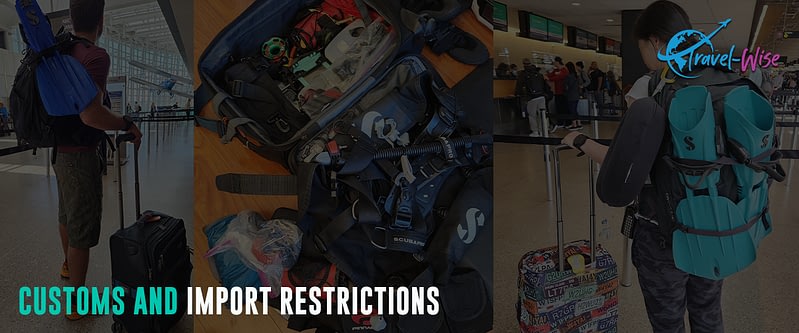
Like any country, Canada has rules, restrictions, and prohibitions about what travelers can bring in or out of the country.
- Personal luggage, equipment, camera, and computer are tax-free.
- Duty-free goods up to a maximum of $800.
- Limited amount of alcohol and tobacco.
- Traveling with more than CAD10,000 or equivalent in another currency must be declared.
To avoid penalties, seizure, and prosecution, travelers must be aware of restricted and prohibited items to enter Canada.
- Firearms and weapons must be declared and duly authorized
- Apply permits and authorizations for explosives, fireworks, and ammunition.
- Declare all food, plants, animals, and related products.
- Secure permit or exemption for cannabis.
- Product safety on consumer products and cosmetics.
Check the Canada Border Service Agency website for the complete list and details about what visitors can bring into or out of Canada during their trip.
Climate Considerations
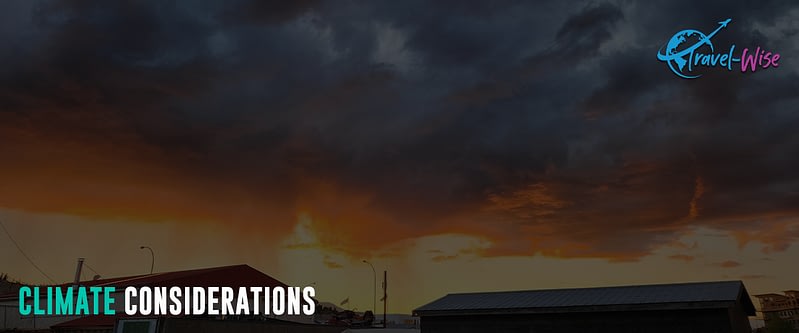
Canadian weather and temperature vary significantly from region to region and season. Winters are severe in many parts of the country, particularly in the interior and Prairie provinces. They usually have daily average temperatures near −15 °C (5 °F) but can drop −40 °C (−40 °F) below with severe wind chills. Whistler, north of Vancouver, gets an average of 38.5 feet of snow yearly at the summit, making it an excellent venue for snowboarding. Snow can persist year-round in parts of northern Canada, while it can only cover the ground of the coastal regions for almost six months.
On the other hand, coastal British Columbia has a temperate climate with a mild and rainy winter. Generally, the average high temperatures on the east and west coasts are around 20 °C (70 °F). Between the coasts, the average summer high temperature ranges from 25 to 30 °C (77 to 86 °F), with temperatures in some interior locations occasionally exceeding 40 °C (104 °F). Specifically, Vancouver has an average high of 25 ℃ (77 ℉), and Toronto and Montreal are at 26 ℃ (79 ℉).
Consider checking the Environment Canada website for the latest weather update, alerts, and forecasts when planning your trip.
Climate Change
Northern Canada is mainly covered by ice and permafrost, but its future is uncertain because the Arctic has been warming three times the global average due to climate change. Research shows that the country’s annual average temperature over land has warmed by 1.7 °C (3.1 °F), with changes ranging from 1.1 to 2.3 °C (2.0 to 4.1 °F) in various regions since 1948.
Canada’s Changing Climate Report (CCCR2022) states that past and future warming in Canada is about double the magnitude of global warming. Below are the summary of its findings:
- The effects of global warming are already evident in many parts of Canada and are still projected to intensify in the future.
- Their surrounding oceans have warmed, become more acidic, and less oxygenated.
- Precipitation is projected to increase, although summer rainfall may decrease in some areas.
- The availability of freshwater is changing, and there is a risk of water supply shortage during summer.
- A warmer climate will intensify more weather extremes in the future.
- There is an expected increase in coastal flooding in many areas of Canada because of the rising local sea level.
Primary Transportation Options
Canada has an efficient, high-capacity multimodal transport system. Travelers in Canada can get around by air, water, and land. All cities and major towns in Canada have a public transportation system, such as buses, trains, subways, light-rail trains, and streetcars or trams.
Air
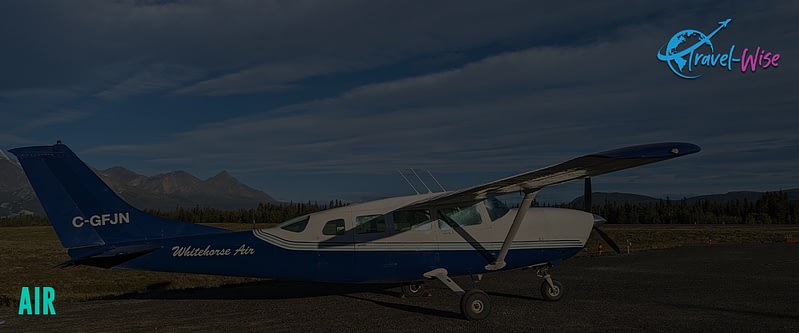
Due to its large size, travelers in Canada often travel between major cities by airplane. Canada has over 100 airports; major airports have direct flights to the US and other cities worldwide. The country’s most prominent and busiest airport is Toronto Pearson International Airport, while Air Canada is Canada’s flag carrier and the largest airline.
Ferry
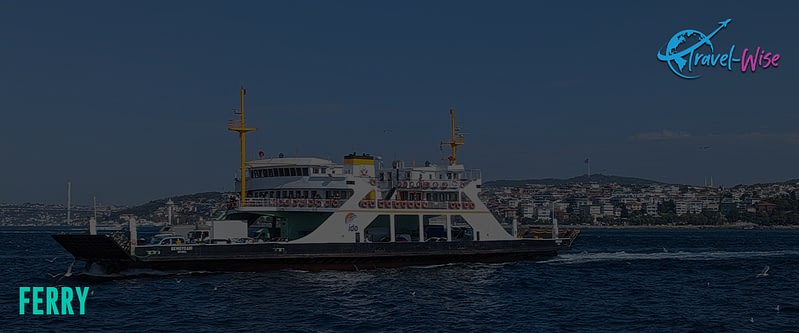
Ferry boats are a common way to travel in coastal areas of Canada, such as British Columbia and the Atlantic region. Many ferries transport not only passengers but including vehicles. Today, Canada has over 180 ferry routes operating in each province and most territories.
Train
Most of Canada’s major cities are connected by a railway and served by VIA Rail. In addition, they have various train services on regular commuter routes. Several scenic destinations are also available, including the silver or gold glass dome coach of the Rocky Mountaineer or the Royal Canadian Pacific vintage cars.
Public Transit
Most Canadian cities have excellent public transit systems. For example, Toronto and Montreal have a subway, Vancouver has SkyTrain, while other cities and even the smallest towns have extensive bus routes. Hence, travelers can quickly transfer from one mode of transportation to another.
To use public transportation, travelers must buy a ticket or a transit pass from stations and convenience stores. Transit passes give unlimited use of public transport for a certain period: two hours, one day, one month, or more. As a result, passes are usually cheaper than many tickets, especially for those who plan to use public transportation often.
Bus
Buses are the most common form of urban transportation in Canada. It is also the most affordable and comfortable way to get around between cities. Canada has no singular country-wide bus system, and regional operators vary. Bus fares also vary according to the distance traveled. Megabus is the cheapest option when traveling between Ontario and Quebec. They also have routes going to New Jersey in New York.
Car and RV
Canada has an extensive network of highways. Hence, long-distance travel by car is possible between most places.
Upon airport arrival, travelers can opt to rent a car or RV from among the rental companies at the airport or in towns and cities. The best options are Budget, Discount, Hertz, National, Enterprise, and Thrifty. For RV rental in Canada, visit Go RVing.
Visit Canada’s Scenic Drives for a guide to some of Canada’s best scenic drives. Of course, do not forget to check the Weather Network for information on highway and road conditions.
Taxi
All cities and towns in Canada have one or more companies that offer taxi services. However, they are expensive, so it is the least option for many people and travelers. Rates are based on meters and vary according to mileage and fees.
Licensed taxi drivers have an official identification card issued by the city and displayed on the taxi’s dashboard.
Start Trip Planning
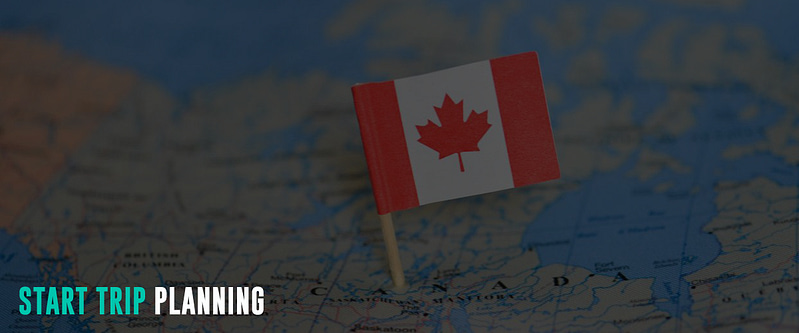
Travel-Wise is made from the ground up to help people travel more, break down the barriers that make it tough to get going, and start your journey as painlessly as possible. Bookmark our other Country Guides to help kick-start your research for future travels. We also offer templated itineraries from our staff and community that help serve as a building block for your trip plans. Alternatively, we also utilize AI to offer a way to generate itinerary ideas. This saves much time just getting you up and running with a template. From there, you can use the trip planner to create your customized itinerary, invite friends and family for collaboration, find others from Travel-Wise to join the trip, book and track important information, journal, and share your experiences at the end or along the way!

